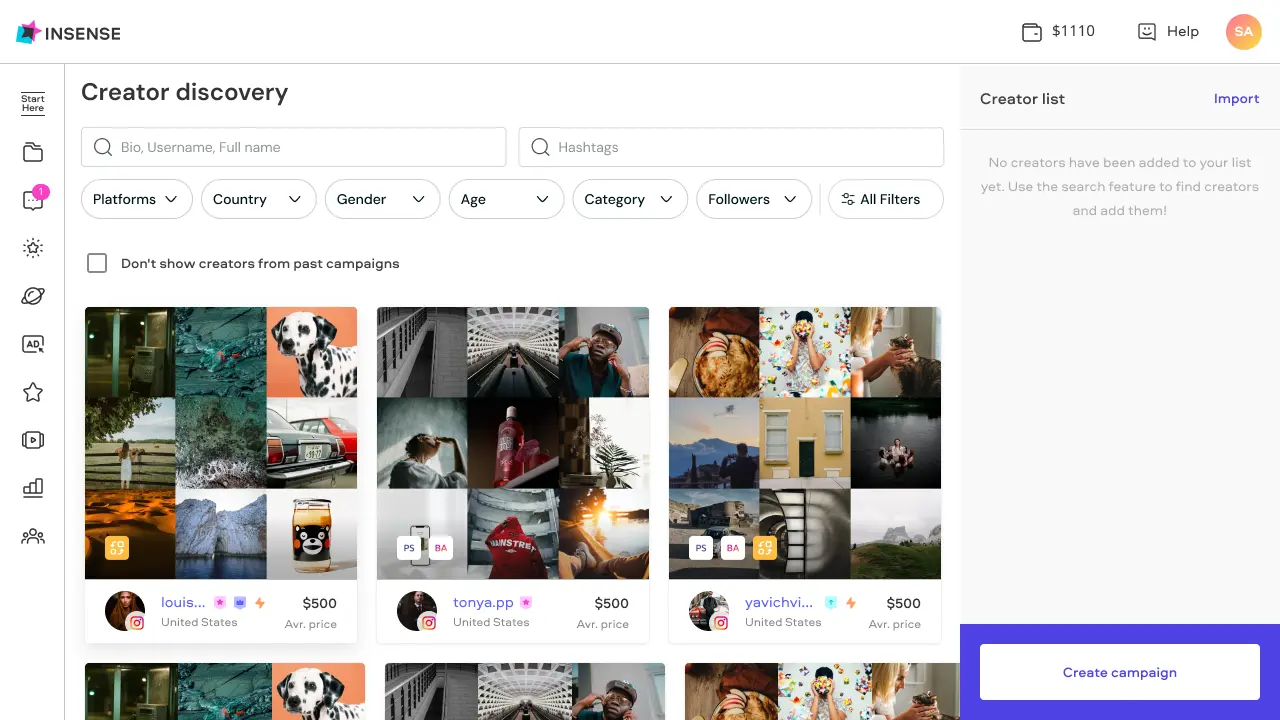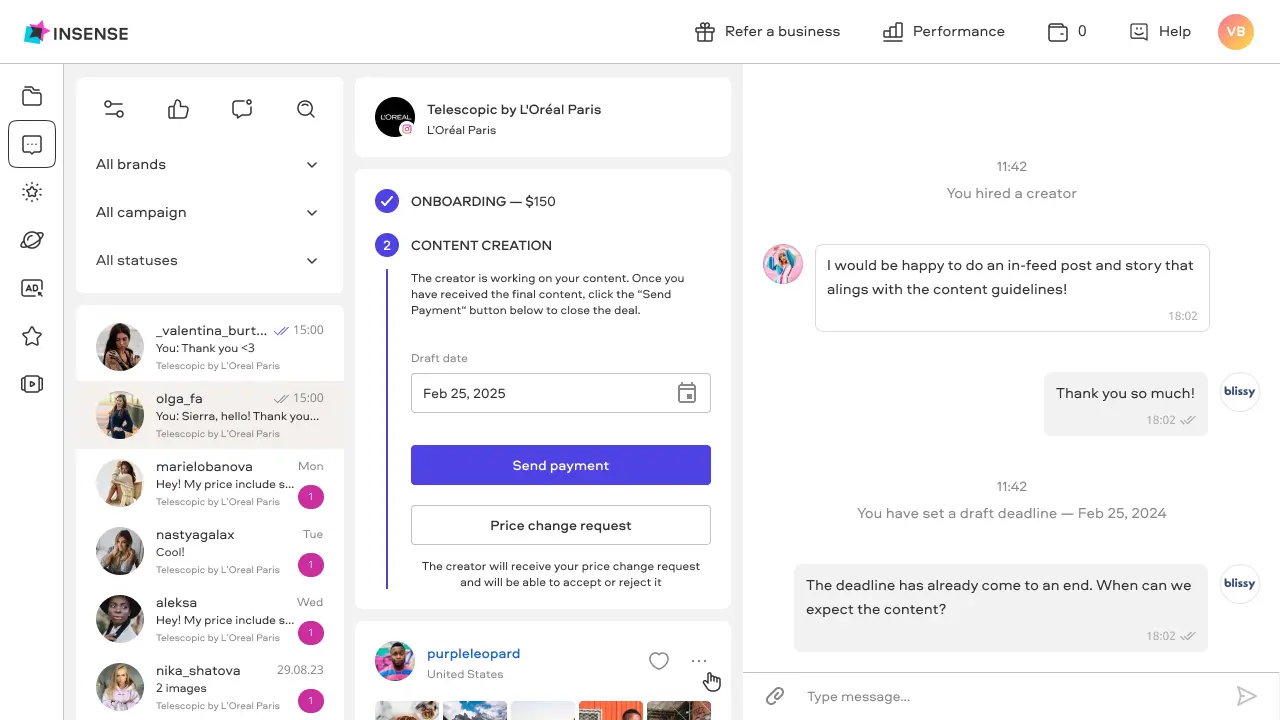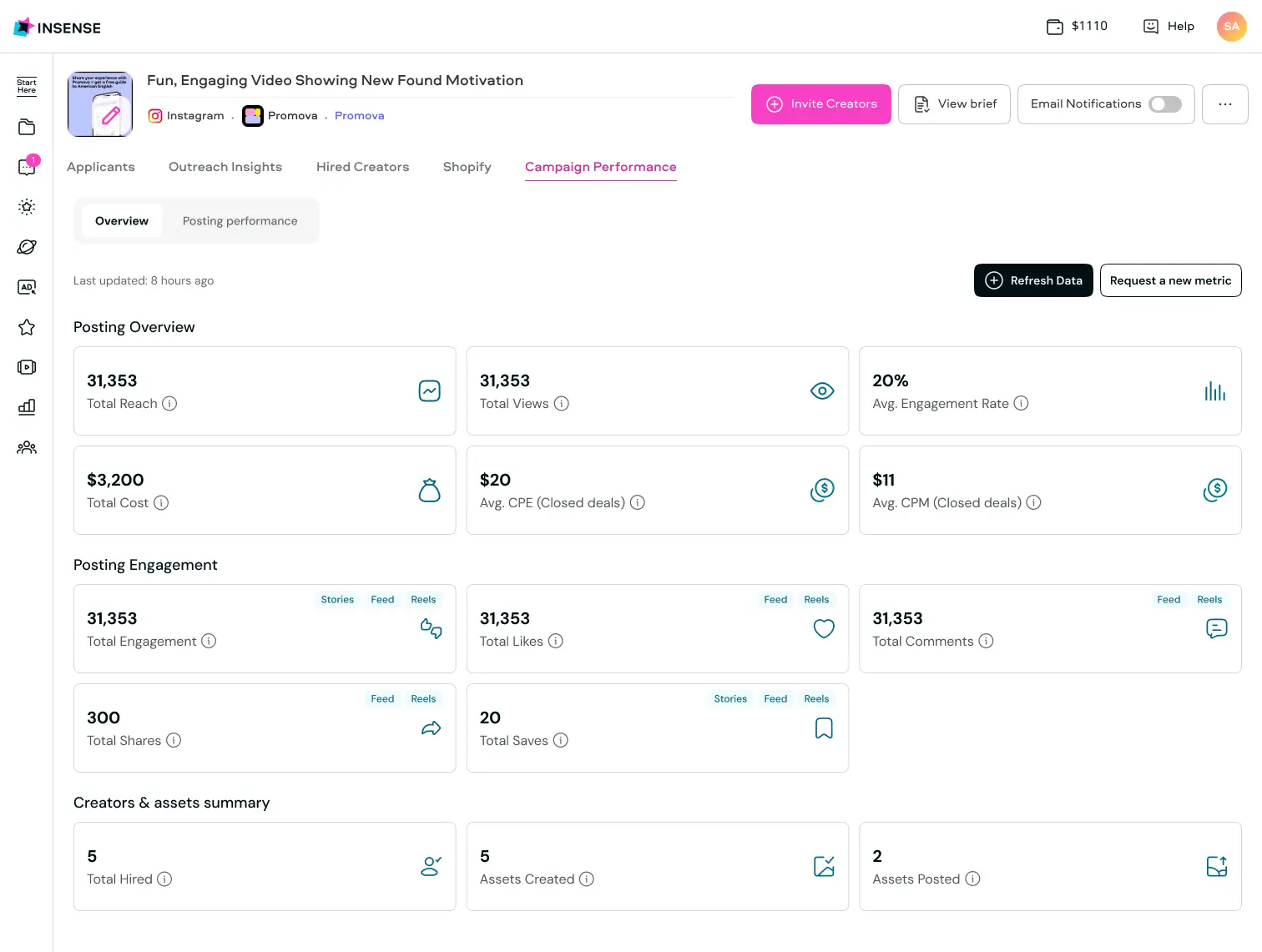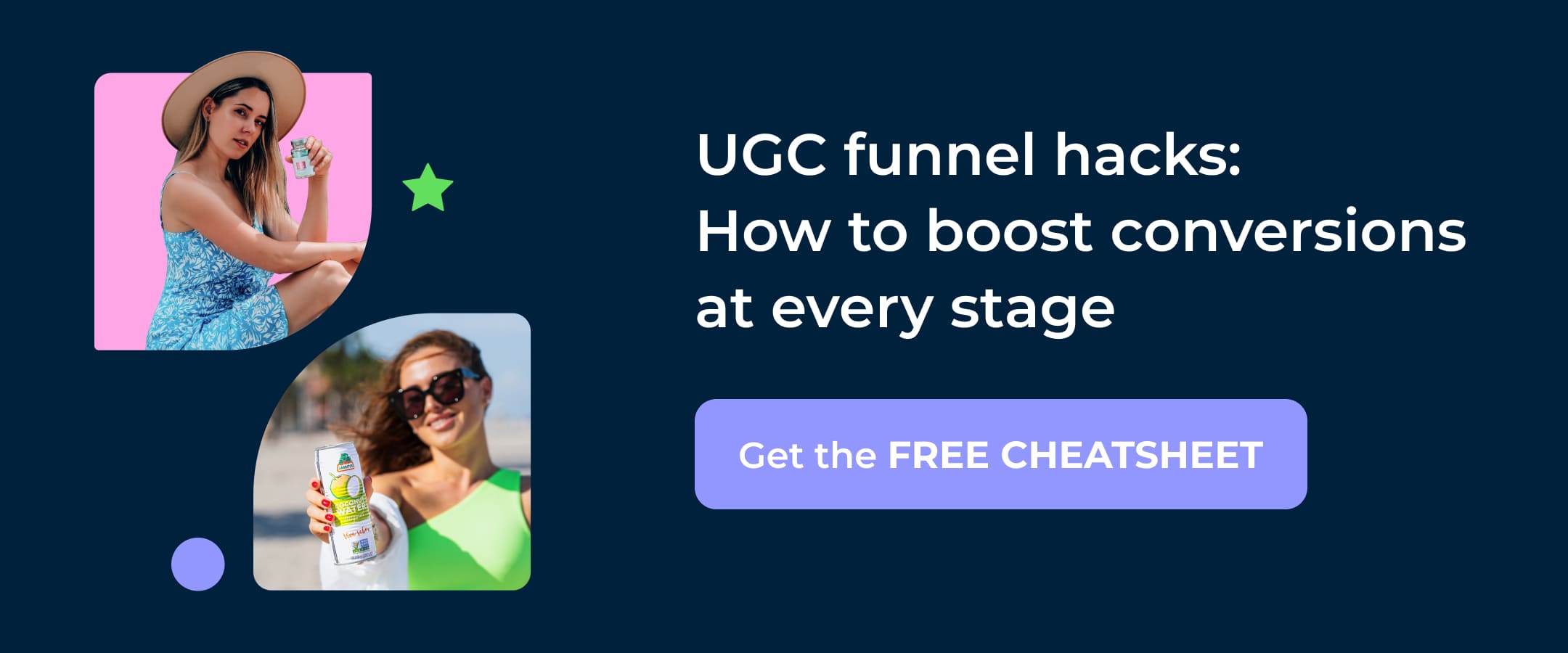By now, you’ve probably heard about the growing success of influencer marketing and are eager to give it a try.
But have you heard about the epic fails as well?
During the devastating California Wildfires, many opportunistic influencers included the hashtag #californiafires in their product advertising posts to attract user attention.
You clearly wouldn’t want your brand associated with someone so inappropriate.
That’s why we’ll give you all the details on the 12 biggest influencer marketing mistakes that brands often make and how to avoid them, including:
- Choosing the wrong influencer
- Not working with micro-influencers
- Focusing too much on reach instead of quality content
But before we go into all of that, let us explain why influencer marketing is worth your time and effort.
Let’s begin!
Why Is Influencer Marketing Important?
Influencer marketing is a digital marketing strategy that uses the influence and reach of social media influencers to promote brands and their products.
The Influencer Marketing Benchmark Report 2024 highlights the growing popularity of this strategy, as one in four marketers intend to allocate more than 40% of their marketing budget to influencer marketing campaigns.
Why? Because of the amazing benefits, of course. Here are some of them:
- Increased consumer trust. One of the biggest challenges brands face nowadays is the lack of trust consumers have in them.
However, a 2023 Matter Communications survey shows that 69% of consumers trust influencer recommendations above brand recommendations.
Therefore, if you get an influencer to advocate for your brand and products, users will trust you.
- Boosted sales. Clearly, marketers wouldn’t invest so much time and money into building influencer marketing campaigns if they didn’t get a big return on investment (ROI).
According to Sprout Social, 49% of all consumers make daily, weekly, or monthly purchases because of influencer posts.
That shows the power influencers hold over social media users and their purchasing decisions.
- Increased brand awareness and reach. Influencers have big follower counts, which means they can expose your brand to new consumer pools.
In fact, a 2024 Izea survey found that influencers reach at least 83% of social media users aged 18–60.
Likewise, you can partner with influencers from another country and use their reach to access a new market and grow your business.
- Higher engagement rates. Influencers already have communities of loyal and engaged followers.
Therefore, when they start creating authentic user-generated content (UGC) to promote your brand, their audience will immediately interact with it through likes, comments, and shares.
Without a doubt, these benefits are worth the marketing effort.
However, you won’t be able to enjoy them unless you create winning influencer marketing campaigns and avoid the following mistakes.
The 12 Most Common Influencer Marketing Mistakes
Based on our influencer marketing case studies and extensive industry research, we’ve compiled the following list of the most common mistakes brands make.

Now, let’s take them one by one and see how you can avoid them.
1. No Clear Marketing Campaign Goal
Influencer marketing campaigns are no different than any other marketing campaign. Thus, the first thing to do is set clear goals.
Without specific marketing goals, you’re simply spending money on influencer content without any clue if it’s generating a return on investment.
Plus, you won’t know what’s working and what’s not, so you won’t be able to optimize to create a successful campaign.
How to avoid: Answer the question: ‘What exactly do I want to accomplish with this campaign?’.
For instance, your end goal could be to increase brand awareness or boost conversion rates and sales.
These specific goals will help you identify the key performance metrics (KPIs) you need to track to measure the performance of your campaign.
2. Not Prioritizing the Target Audience
One of the main goals of influencer marketing is to get influencers to promote your products to their followers.
However, if those followers don’t match your target audience, your marketing efforts will be in vain.
For instance, if you work with a makeup influencer whose follower base consists mostly of young women aged between 18 and 24, they won’t be interested in your anti-aging cream for women over 40.
How to avoid: Research and identify your target audience’s demographics, interests, and preferences.
Once you have a clear picture of your ideal customers, search for influencers in your niche whose audience matches your brand’s.
While you can do this manually, it is time-consuming and not very accurate.
Therefore, we suggest doing it automatically, using an influencer marketing platform like our very own Insense.
Our Creator Marketplace allows you to filter your search by industry, influencer demographics, and their audience’s demographics so you can find the right match.

3. Choosing the Wrong Influencer for Your Brand
In addition to finding the right influencer for your target audience, you also need to find the right match for your brand.
If the content creator doesn’t align with your brand’s image and values, this can damage your reputation.
For example, if your company has taken a stand to support sustainability, working with an influencer who openly dismisses eco-friendly practices on social media will make your brand lose credibility and consumer trust.
On top of that, communication and cooperation are essential for building good long-term relationships with your content creators.
Therefore, working with someone who doesn’t take their job seriously, is constantly late, and isn’t willing to improve can jeopardize your entire campaign.
How to avoid: While you can use Insense to find quality content creators in your niche, you should still take a look at their social media accounts to make sure their content is a good fit for your brand.
As for how diligent they are in their work, you can check other clients’ ratings and reviews.
4. Not Working with Micro-Influencers
One of the biggest mistakes brands make is thinking they need to work with mega-influencers or celebrities to get the best results.
But this couldn’t be further from the truth!
In fact, according to the HyperAuditor findings, as cited by Shopify, nano-influencers have the highest engagement rates (2.53%), while celebrities have the lowest (0.92%).
However, because of their limited reach, nano-influencers work well for very small businesses targeting small, local niches.
Therefore, if you want to boost brand awareness and engagement, micro-influencers are the best option.
How to avoid: Before you begin the influencer outreach process, check their follower count.
For this step, keep in mind there are four types of influencers:
- Nano-influencers: 1K–10K followers
- Micro-influencers: 10K–100K followers
- Macro-influencers: 100K–1M followers
- Mega-influencers or celebrities: 1M+ followers
However, things are much easier when using Insense, because our database consists only of nano- and micro-influencers.
5. Not Vetting Candidates Before Starting a Partnership
Unfortunately, the growing success of influencer marketing has also resulted in many scams.
Some of the most common include fake follower counts and social media accounts, plagiarized sponsored posts, and using bots to boost engagement rates.
Influencer marketing fraud is real. Some creators fake their reach with bots, fake followers, and engagement tricks. The FTC says fraud cost consumers $12.5B in 2024, and influencer scams are part of that.
How is that possible?
Because businesses like yours are wasting their marketing budget on ineffective partnerships that hurt their brand’s reputation and decrease customer trust.
How to avoid: On the one hand, you can use Insense and let our dedicated and highly competent influencer scouting team identify and vet content creators for you.
On the other hand, you can vet influencers yourself, but this is much more difficult and takes a lot of time.
Here are some strategies you can use:
- Use fake follower-checking tools, like Keesy or Upgrow.
- Compare the number of followers with the engagement. For example, if a user has many followers but very few likes, comments, and shares, most of those followers are likely fake.
- Analyze the engagement to spot generic, random, or spammy comments that indicate the use of bots.
6. Focusing on Reach Instead of Quality Content
Once again, you need to forget about the numbers because quality beats quantity every time.
Just because a social media user has a big following doesn’t mean their audience is engaged or that they generate high-quality UGC.
Low-quality content can hurt your brand’s reputation, making you lose credibility, and it can deter existing and potential customers from working with you.
According to the CrowdRiff 2024 Trends Report, the demand for authentic and relatable content is giving rise to a micro-influencer revolution.
How to avoid: Look for micro-influencers who share personal details about their lives and directly interact with their followers, because that makes them and their content more relatable and trustworthy, which will boost audience engagement.
Likewise, try to find content creators who genuinely like your brand and products, because they can generate more authentic content and can even turn into brand ambassadors.
Ultimately, you should also take a look at their previous collaborations and assess the quality of the content they produced to make sure they have the necessary skills to help you reach your campaign goals.
7. Over-Spending on Your Campaign
While a successful campaign can yield great results, this doesn’t mean you should overspend on influencer marketing.
Keep in mind that you need to invest in various types of marketing if you want your business to thrive, meaning that you shouldn't spend your entire budget on one strategy.
On top of that, it takes time to get a high return on investment, so if you drain your accounts in the first few months, you won’t be able to sustain your campaigns afterward.
How to avoid: Carefully assess your company’s budget and determine how much you can afford to spend on marketing, in general, and on influencer marketing, in particular.
Next, set a timeline for your campaign so you can establish a monthly budget.
Once you know your budget, look for micro-influencers who offer convenient rates.
However, keep in mind that influencer marketing pricing varies from one social media platform to another.
The good news is that Insense allows you to search for content creators by price and covers all payment legalities, saving you a lot of time.
For small businesses with limited budgets, influencer gifting is the best solution.
You simply send content creators free products or offer them free services in exchange for creating and sharing UGC promoting your brand.
8. Excluding Influencers from the Creative Process
We’ve already mentioned that influencer marketing works so well because users trust and enjoy the authentic content influencers post.
The problem is that if you impose too many rules and restrictions on influencers, their UGC will lose its authenticity and their followers will notice.
After all, most users follow influencers long-term, which means they are very familiar with their style and can immediately spot changes.
If this happens, followers will gradually lose trust in the influencer and the brand they represent, feeling like they are only doing it for the financial rewards, without actually caring about the audience.
How to avoid: The only way to avoid this is to give influencers enough creative freedom to stay true to themselves and their followers.
Of course, if you’re worried about what they’ll share, you can simply ask creators to send you the content for approval before they post it.
9. Focusing on the Wrong Platform
With so many social media platforms out there, it gets quite expensive to invest in influencer marketing on all of them, especially if you own a small business.
But we’re here to tell you that you don’t have to use them all because it’s actually ineffective.
For instance, if you’re a clothing brand targeting women over 40, you won’t reach your target audience using TikTok influencer marketing, because this platform is preferred by Gen Z users.
How to avoid: Once again, it’s very important to identify your target audience.
Then, do a bit of online research to identify the social media platform where your audience demographic likes to hang out.
By focusing on the right social media platform, you’ll generate a much higher return on investment.
10. Not Giving Enough Detail in Your Campaign Brief
While you need to give influencers creative freedom, you still have to provide them with some basic information to work with.
After all, these are often people who are unfamiliar with your brand and products, so you can’t expect them to produce the right type of content without a bit of direction.
Likewise, if they don’t know your campaign goals, they won’t be able to help you achieve them.
How to avoid: Create your own campaign brief that offers influencers all the information they need upfront, or use Insense’s Creative Brief.
We recommend the latter because it makes things easier and helps you get better results.
Using our brief template you can provide information on:
- Campaign format (type, objective, platform, price range)
- Product information (name, description, image)
- Deliverables (type of content, frequency)

11. Not Building a Relationship with Influencers
Focusing only on one-time influencer partnerships is a big mistake that can cost you a lot of time and money.
It’s the same as if you were hiring new employees each time and needed to train them until they understand what they have to do and start performing well.
However, a long-term collaborator who knows your brand and products well can create more authentic content and gradually build consumer trust and loyalty to your brand.
How to avoid: Establish long-term influencer partnerships by building a reciprocal sense of respect, always paying them on time, and keeping in touch at all times.
Our Relationship Management feature is designed to help you do just that.
Specifically, it allows you to keep track of all your influencer collaborations, shortlist your favorite creators, and work with them over time.
Likewise, you can use Direct Chat to communicate with your creators regularly and build meaningful connections.

12. Not Tracking Key Metrics & Performance
Without tracking KPIs and monitoring the performance of your campaigns, it’s impossible to know if you’re achieving your marketing goals.
You could be throwing away your company’s budget and not even know it.
Also, without knowing the weaknesses of your campaigns, you cannot improve them.
How to avoid: Identify the KPIs you need to track based on your campaign goals and use specialized analytics tools to help you measure them.
Likewise, you can use our Performance feature, which offers comprehensive analytics on your influencer collaborations and campaign performance.

Using influencer marketing reporting, carefully analyze this data to identify your campaign’s strengths and weaknesses and optimize accordingly.
Now, let’s look at some additional best practices that will help you avoid all these pitfalls.
4 Influencer Marketing Best Practices To Implement
Truth be told, you can’t control everything and mistakes can happen, but if you apply the following best practices you can at least minimize the risks:
- Be realistic about what to expect and when. As a marketer, you want to see immediate results, but, unfortunately, that’s not possible.
Everything from increasing brand awareness and engagement rates, to driving sales and building customer loyalty takes time.
Thus, you need to set realistic, achievable short-term goals and deadlines and be patient.
At the same time, if something is not working you can adjust and improve your strategy along the way.
- Always focus on authenticity. Users no longer seek the artificial perfection that brands and celebrities used to promote.
They are now looking for genuine content that resonates with them, which is why you should always focus on authenticity.
- Make sure influencers are transparent about your sponsorship. According to the US Federal Trade Commission (FTC) guidelines, influencers are legally bound to disclose sponsored posts.
This will help you avoid legal issues and build consumer trust in your brand, as it will show people that you’re not trying to trick them into buying your products.
- Seek honest feedback. If you want to optimize your influencer campaigns, you need to seek honest feedback from your influencers and customers.
This strategy will also show them you value their opinion and will help build loyalty.
The Takeaway
We hope we didn’t scare you off with all these influencer marketing mistakes that you have to stay clear of.
But knowing what to look out for from the very beginning is important for the success of your campaigns.
Of course, if you want to minimize some of these risks, you can simply use an influencer marketing platform, like Insense.
To learn more about how it all works, just book a demo with Insense and we’ll give you all the details.








.avif)

